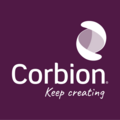

Successful change management for SAP S/4HANA projects
Standardisation as a challenge
All the benefits that SAP S/4HANA brings are geared towards a much higher level of standardisation and do not support the level of customisation that R/3 users are used to. This means that users have to adapt to the application, which can be a challenge if a high level of user acceptance is the goal. Employees need to learn new processes, grasp new ways of working and the desired outcomes, and understand the principles of the redesigned processes.
User adoption as a success factor
The CUBE project (Corbion United By ERP) launched by Corbion aimed to set up a completely new IT landscape with new processes that would further drive the company's success. One condition for the success of the project was that the users were able to follow along on this journey. Corbion therefore opted for both training measures and accompanying support in the work process. Therefore, the scope of the training was reduced, while the user support was as close as possible to the work process.
All the advantages that SAP S/4HANA brings are geared toward a significantly higher degree of standardization and don’t support the level of customization that R/3 users are accustomed to. This means users need to adapt to the application, which can pose challenges when aiming for a high level of user adoption. If companies want to harvest these benefits resulting from SAP S/4HANA, they will need to take change management seriously across all 5 Moments of NeedTM (a concept developed by learning evangelist Bob Mosher). The 5 Moments of Need are:
Learning for the first time
Employees will need to learn new processes and adapt to the new SAP S/4HANA user interface and why the change has been initiated.
Expanding knowledge base
Employees need to fully grasp the new working methods and the desired outcomes, understand the principles of redesigned processes and learn to use the analytical capabilities.
Remembering and applying learned concepts
Once the solution has gone live, support is needed for more than just base cases. Employees should have access to materials that help in their actual working context, which is defined by their role and the current application, process and task.
When things don’t go according to plan
In today’s working environment, the exception is the rule. You want your team to react quickly and appropriately without taking up their colleagues’ time with meetings or calls. That’s why employee self-service for content access is imperative, and why even more content should be created and managed by in-house subject matter experts (SMEs).
When change occurs
Agility is one of the great plus points of SAP S/4HANA. Improvements can be implemented and rolled out in a much more dynamic way and the time it takes to transform identified needs (data) into process and resource modifications can be considerably shortened. This is another area where the demand for efficient SME content creation comes into play in combination with push notifications and real-time availability for new content.
Many of our customers have an established change management approach that uses our tts performance suite as a platform. All they have to do is apply this approach to their SAP S/4HANA initiatives. But what do you do if you haven’t established this type of approach yet? This was the case at Corbion, a global market leader in the production of lactic acid for the food industry. Corbion operates in many countries in Asia, Europe and Latin America and intends to roll out “Source to Pay”, “Demand to Supply”, “Order to Cash”, “Maintain to Settle” and “Finance to Manage” in a greenfield implementation as part of its SAP S/4HANA project. The project was dubbed CUBE, which stands for “Corbion United By ERP”. The change management stream of the overall implementation project followed a very systematic – or as we would say, “industrialized” – approach.
- Corbion ran a selection process in order to find the best user adoption technology, and selected tts performance suite for content creation, curation and context-sensitive distribution.
- Corbion SMEs as well as tts consultants ran a learning needs analysis as part of a consultant-coached process. Process by process, the required content was defined based on context (e.g. employee role, process, end product) and the learning and support formats needed (step list, documentation, simulation, e-learning, other materials).
- This content was transferred to the tts performance suite workbench along with information about context, content and when and by whom the content would need to be created.
- Standard templates were developed for a standardized Corbion content design and a content design manual was also produced.
- Material was created and localized in line with the go-live priorities and the finalization process in SAP. Corbion decided to outsource content creation, with SMEs providing input and reviewing content.
- The first wave of go-live rollouts commenced in Asia on 1 October 2019.
- Content maintenance was stipulated by the Corbion content governance approach, the intention being for Corbion SMEs to manage maintenance work to ensure permanent alignment between business processes and the available learning/support content.
While the rollout is still ongoing, this industrialized content creation and distribution process will become the new gold standard within Corbion change management initiatives. Work is already under way on exploring additional software projects.
See for yourself and schedule a demo appointment. Our team will be happy to show you how to take advantage of the tts performance suite for your business. Simply fill out the form and we will get in touch with you as soon as possible.



